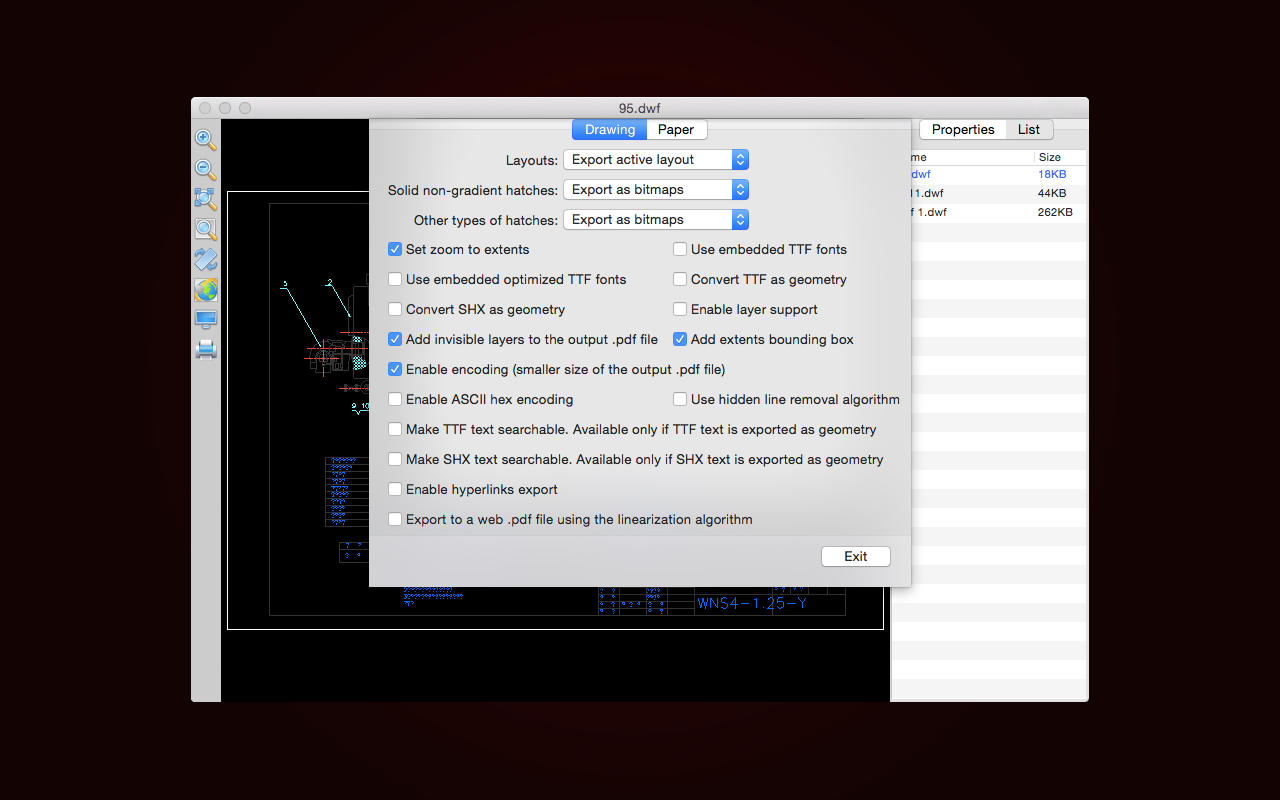

Unlike JPG, PNG uses the LZW compression method which is a lossless compression, meaning there is no loss in quality when you open and save a file again. PNG handles detailed, high-contrast images well and supports transparency. All in all, it is a great choice if you want to make a raster image out of your drawing. PNG, however, will not contain extra data related to the original DWG file. As an example, you can quickly email it or attach it to your portfolio so that anyone could download and instantly view it without any additional CAD viewers or applications installed. TIFF provides great visual accuracy and can preserve layer data and other information, but is much larger in size.

TIFF is a raster format with minimal loss and compression, but it is not editable. Thanks to lossless compression, this format is the perfect choice for high-quality graphics and is also used in engineering. Since TIFF files typically are higher resolution images, they are often used in mapping, medicine and other areas where highest detail image quality is a must. It also provides high-level quality and fidelity, can keep layer data, searchable text, and more.

PDFs can be vector-based and retain high accuracy of a DWG or DWF in terms of line location or can be image-based. How to process multiple CAD files without opening them How to export to PDF directly from AutoCAD This format is very convenient for sharing and exchanging files between a vendor and a client – everyone can open and view it and add comments without interfering with the original drawing structure and elements.


 0 kommentar(er)
0 kommentar(er)
